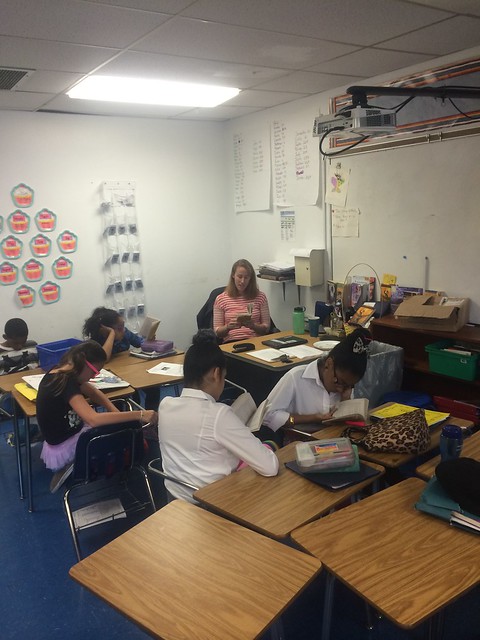Developed for each grade level, content area, and course by committees of Georgia educators in March 2015 and July 2015. The ALDs are based on the state-adopted content standards. Grade 5 transitional English Language Arts assessment is like. The Practice Test may be used at home or at school for students to become familiar with the iLEAP test they will take in spring 2013. Bar graphs .
Standards in this strand:
Key Ideas and Details:
CCSS.ELA-Literacy.RL.5.1
Quote accurately from a text when explaining what the text says explicitly and when drawing inferences from the text.
Quote accurately from a text when explaining what the text says explicitly and when drawing inferences from the text.
CCSS.ELA-Literacy.RL.5.2
Determine a theme of a story, drama, or poem from details in the text, including how characters in a story or drama respond to challenges or how the speaker in a poem reflects upon a topic; summarize the text.
Determine a theme of a story, drama, or poem from details in the text, including how characters in a story or drama respond to challenges or how the speaker in a poem reflects upon a topic; summarize the text.
CCSS.ELA-Literacy.RL.5.3
Compare and contrast two or more characters, settings, or events in a story or drama, drawing on specific details in the text (e.g., how characters interact).
Compare and contrast two or more characters, settings, or events in a story or drama, drawing on specific details in the text (e.g., how characters interact).
Craft and Structure:

CCSS.ELA-Literacy.RL.5.4
Determine the meaning of words and phrases as they are used in a text, including figurative language such as metaphors and similes.
Determine the meaning of words and phrases as they are used in a text, including figurative language such as metaphors and similes.
CCSS.ELA-Literacy.RL.5.5
Explain how a series of chapters, scenes, or stanzas fits together to provide the overall structure of a particular story, drama, or poem.
Explain how a series of chapters, scenes, or stanzas fits together to provide the overall structure of a particular story, drama, or poem.

5th Grade Elamr. Mingolello's 5th And 6th Grade Ela Grade
CCSS.ELA-Literacy.RL.5.6
Describe how a narrator's or speaker's point of view influences how events are described.
Describe how a narrator's or speaker's point of view influences how events are described.



Integration of Knowledge and Ideas:
CCSS.ELA-Literacy.RL.5.7
Analyze how visual and multimedia elements contribute to the meaning, tone, or beauty of a text (e.g., graphic novel, multimedia presentation of fiction, folktale, myth, poem).
Analyze how visual and multimedia elements contribute to the meaning, tone, or beauty of a text (e.g., graphic novel, multimedia presentation of fiction, folktale, myth, poem).
CCSS.ELA-Literacy.RL.5.8
(RL.5.8 not applicable to literature)
(RL.5.8 not applicable to literature)
CCSS.ELA-Literacy.RL.5.9
Compare and contrast stories in the same genre (e.g., mysteries and adventure stories) on their approaches to similar themes and topics.
Compare and contrast stories in the same genre (e.g., mysteries and adventure stories) on their approaches to similar themes and topics.
5th Grade Elamr. Mingolello's 5th And 6th Grade Ela
Range of Reading and Level of Text Complexity:
CCSS.ELA-Literacy.RL.5.10
By the end of the year, read and comprehend literature, including stories, dramas, and poetry, at the high end of the grades 4-5 text complexity band independently and proficiently.
By the end of the year, read and comprehend literature, including stories, dramas, and poetry, at the high end of the grades 4-5 text complexity band independently and proficiently.
5th Grade Elamr. Mingolello's 5th And 6th Grade Ela High School
Alabama Courses of StudyAlaska Content and Performance StandardsArizona's College and Career Ready StandardsArkansas Curriculum FrameworksCalifornia Content StandardsColorado Academic Standards (CAS)Common Core State StandardsConnecticut Core StandardsDelaware Standards and InstructionFlorida StandardsGeorgia Standards of ExcellenceHawaii Content and Performance StandardsIdaho Content StandardsIllinois Learning StandardsIndiana Academic StandardsIowa CoreKansas Academic StandardsKentucky Academic StandardsLouisiana Academic StandardsMaine Learning ResultsMaryland College and Career-Ready StandardsMaryland StandardsMassachusetts Curriculum FrameworksMichigan Academic StandardsMinnesota Academic StandardsMississippi College & Career Readiness StandardsMissouri Learning StandardsMontana Content StandardsNebraska Core Academic Content StandardsNevada Academic Content StandardsNew Hampshire College and Career Ready StandardsNew Jersey Common Core StandardsNew Jersey Student Learning StandardsNew Mexico Content StandardsNew York State Learning Standards and Core CurriculumNorth Carolina Standard Course of StudyNorth Dakota Academic Content StandardsOhio Learning StandardsOklahoma Academic StandardsOregon Academic Content StandardsPennsylvania Core and Academic StandardsRhode Island World-Class StandardsSouth Carolina Standards & LearningSouth Dakota Content StandardsTennessee Academic StandardsTexas Assessments of Academic Readiness (STAAR)Texas Essential Knowledge and Skills (TEKS)U.S. National StandardsUtah Core StandardsVermont Framework of Standards and LearningVirgin Islands Common Core StandardsVirginia Standards of LearningWashington DC Academic StandardsWashington State K–12 Learning Standards and GuidelinesWest Virginia College and Career Readiness StandardsWisconsin Academic StandardsWyoming Content and Performance Standards
